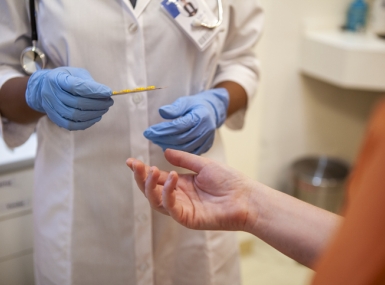HHS Announces New Reporting and Testing Requirements for Nursing Homes and other Providers
Author

Blaire Bryant
Upcoming Events
Related News

Key Takeaways
On Tuesday, August 25 the Department of Health and Human Services announced regulatory changes through an interim final rule from the Centers for Medicare & Medicaid Services (CMS). The rule would require all Medicare-certified nursing homes to test their staff for COVID-19 and requires that they offer tests to residents.
While prior CMS testing guidance for nursing homes have taken the form of recommendations rather than mandates, the agency intends to begin enforcing adherence to staff testing requirements for these facilities through sanctions ranging from $400 per day to over $8,000 for an instance of noncompliance.
The enhancements being made to testing rules and enforcement follows last month’s announcement of a new HHS program, which would provide one time shipments of point-of-care antigen testing instruments to prioritized nursing homes across the U.S. by the end of September.
CMS is recommending that the frequency of staff testing be based on the “degree of community spread”, which is determined by the amount of COVID-19 infections both within the facility and in the surrounding community. To cover testing expenses, the agency previously announced the distribution of $2.5 billion from the $175 billion CARES Act Provider Relief Fund, which supplements the $4.9 billion previously distributed to skilled nursing facilities. In addition to funding, the agency is also offering new training courses for nursing home staff aimed at mitigating the spread of COVID-19 in these facilities through training and the sharing of best practices.
Nationally, counties own, operate and support 758 skilled nursing facilities and nursing homes, which have been disproportionately impacted by COVID-19. Given the devastating impact of COVID-19 on local economies, regular testing of staff and residents would be unmanageable without sustained Federal investment.
The new rules were announced in conjunction with a larger package of data reporting requirements for hospitals and laboratories which would requires them to report COVID-19 case information to HHS daily or face civil monetary penalties.
The changes are slated to take effect following the 60-day comment period for the interim final rule. NACo will continue to track and report on these and other regulatory changes related to county COVID-19 response efforts.
Additional Resources
- NACo Brief: Nursing Homes and COVID-19
- CMS Press Release: Trump Administration Strengthens COVID-19 Surveillance with New Reporting and Testing Requirements for Nursing Homes, Other Providers
- CMS Interim Final Rule

Attachments
Related News

U.S. House reintroduces legislation to address the Medicaid Inmate Exclusion Policy
Two bipartisan bills aimed at addressing the Medicaid Inmate Exclusion Policy (MIEP) were recently reintroduced in the U.S. House of Representatives.

House E&C Committee advances SUPPORT Act reauthorization
On April 9, the U.S. House Energy and Commerce Committee marked up the SUPPORT for Patients and Communities Reauthorization Act of 2025. The bipartisan bill aims to reauthorize critical programs that target overdose prevention amid the renewal of the opioid crisis Public Health Emergency declaration.

Bird flu update: What county leaders should know
As of April 7, there have been 70 confirmed cases of bird flu in the United States, but no person-to-person spread has been detected.
